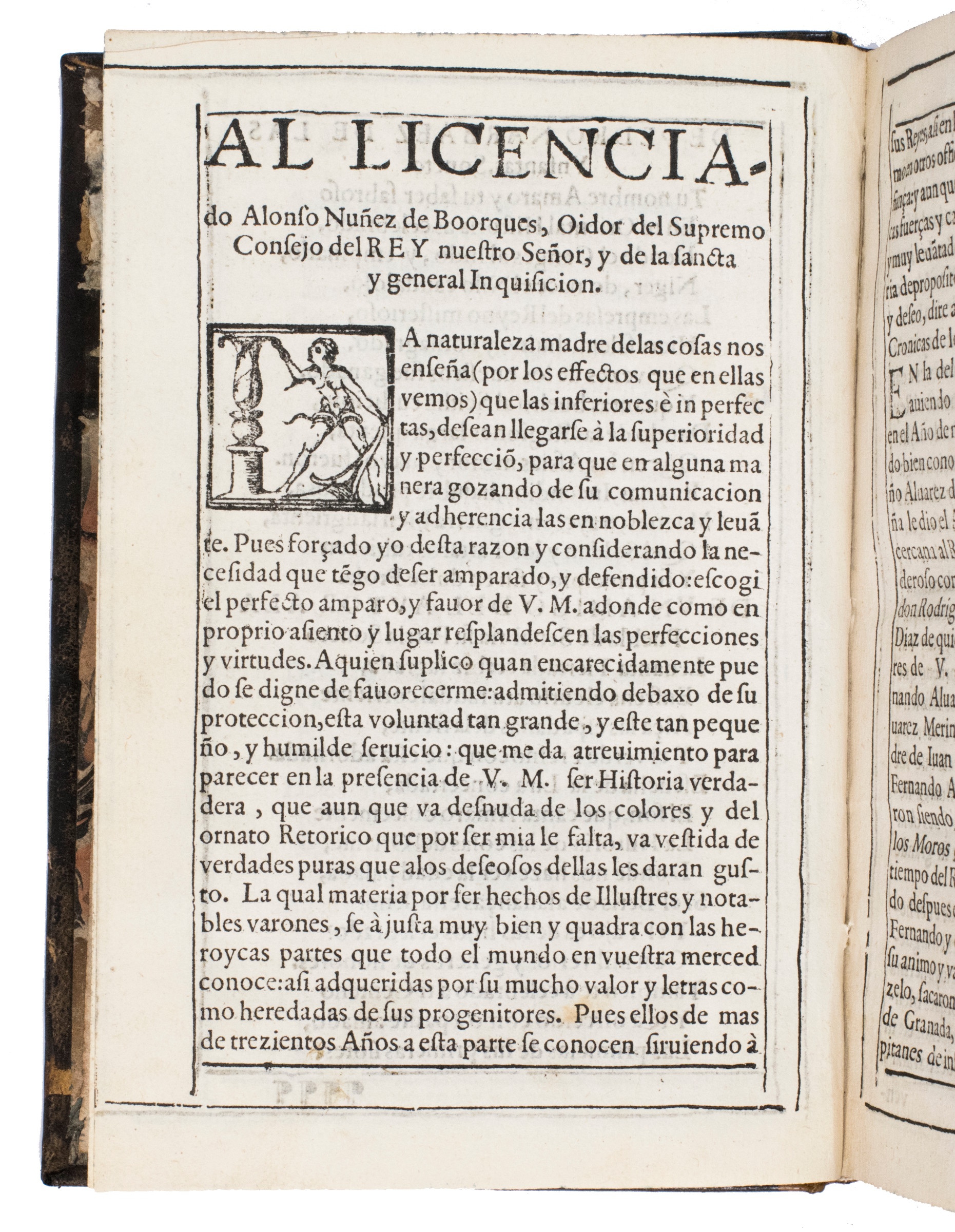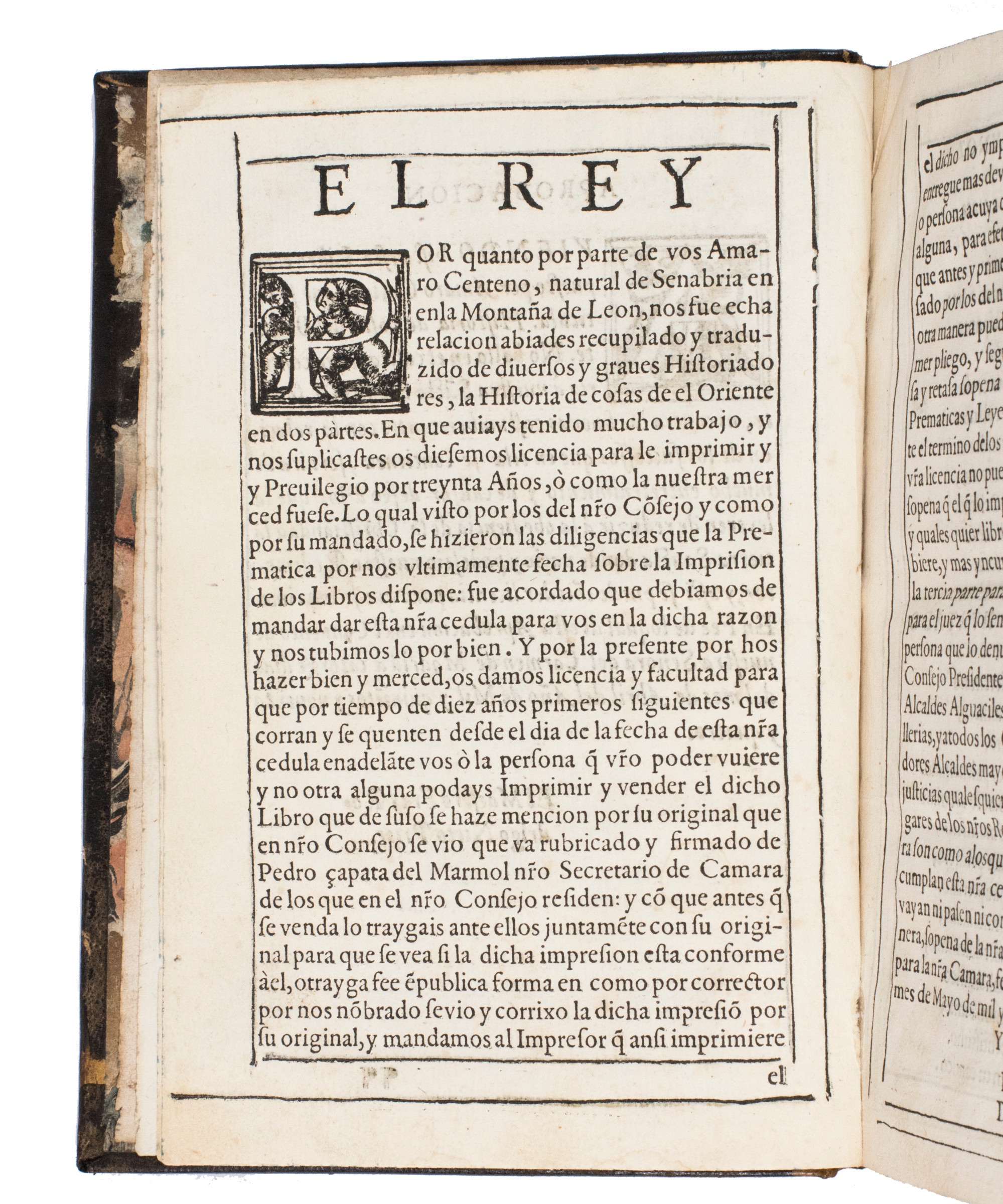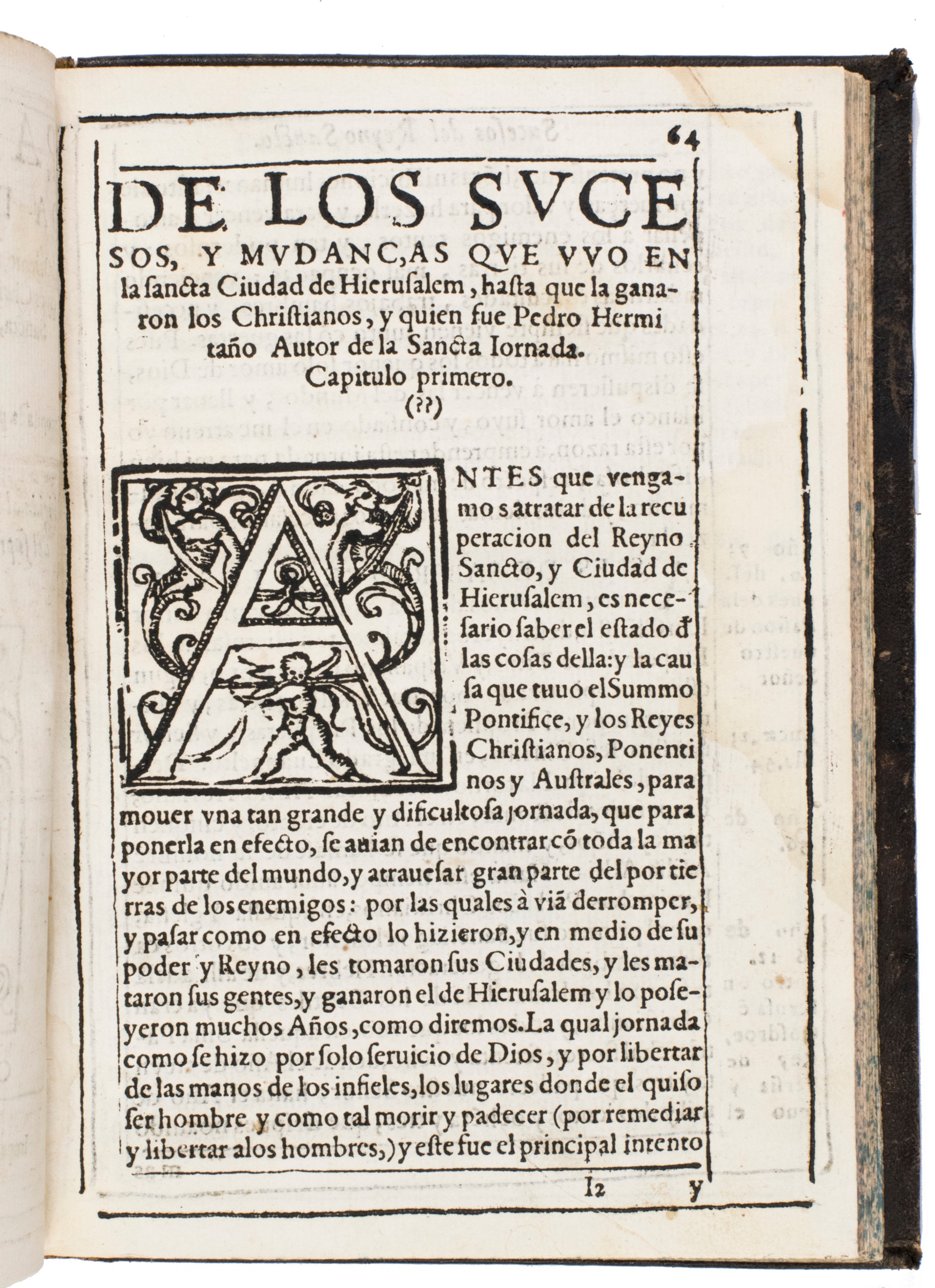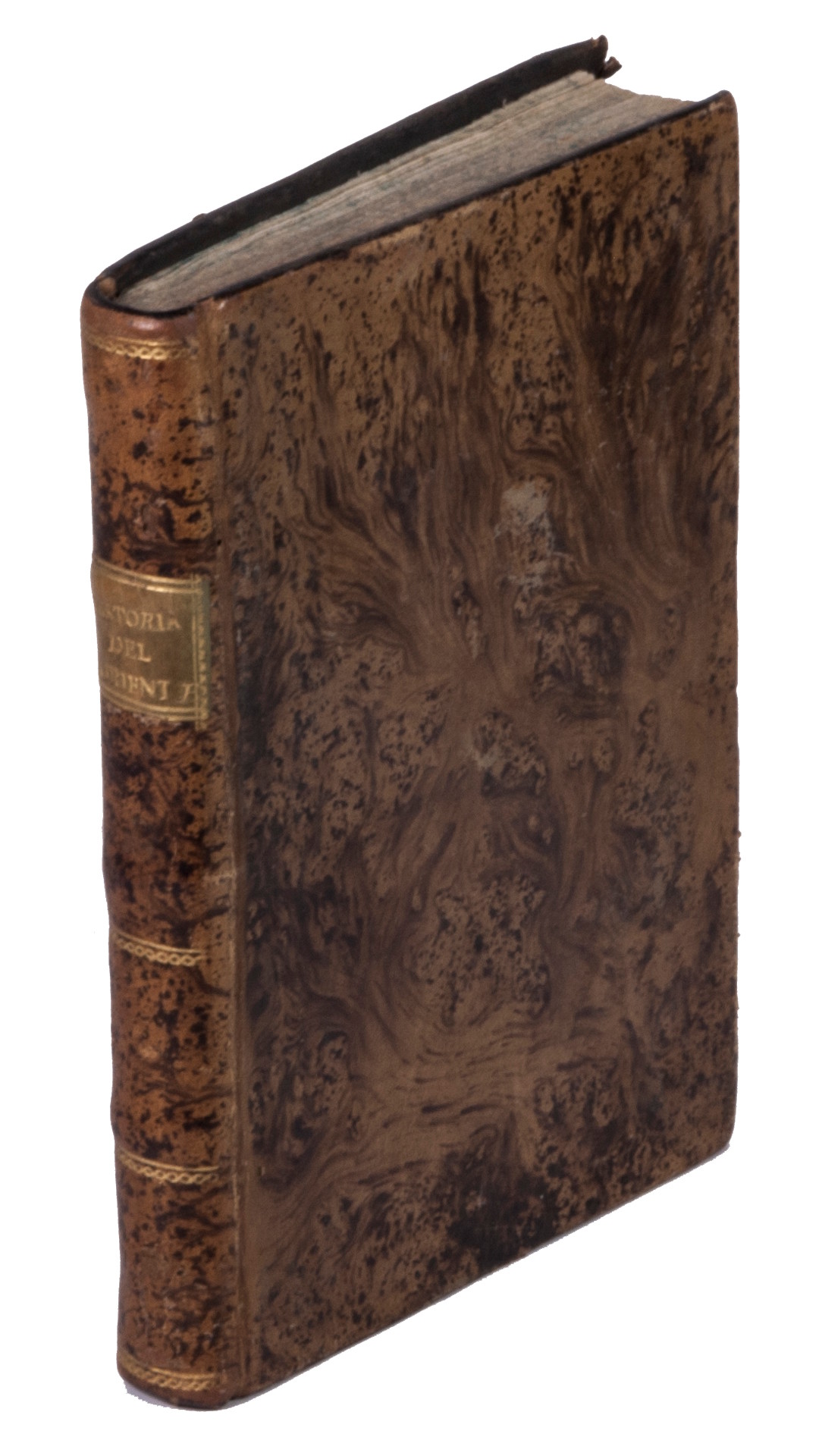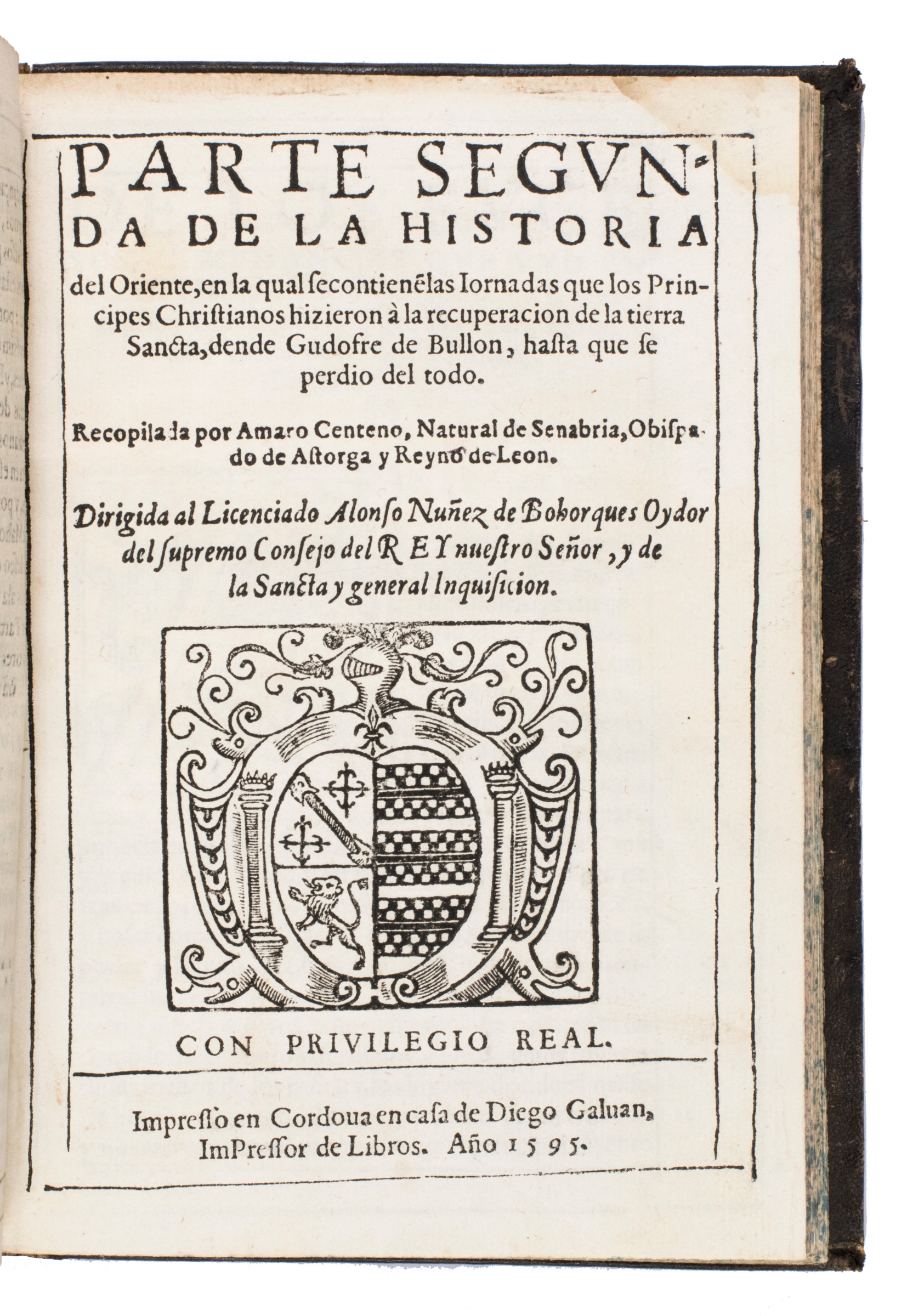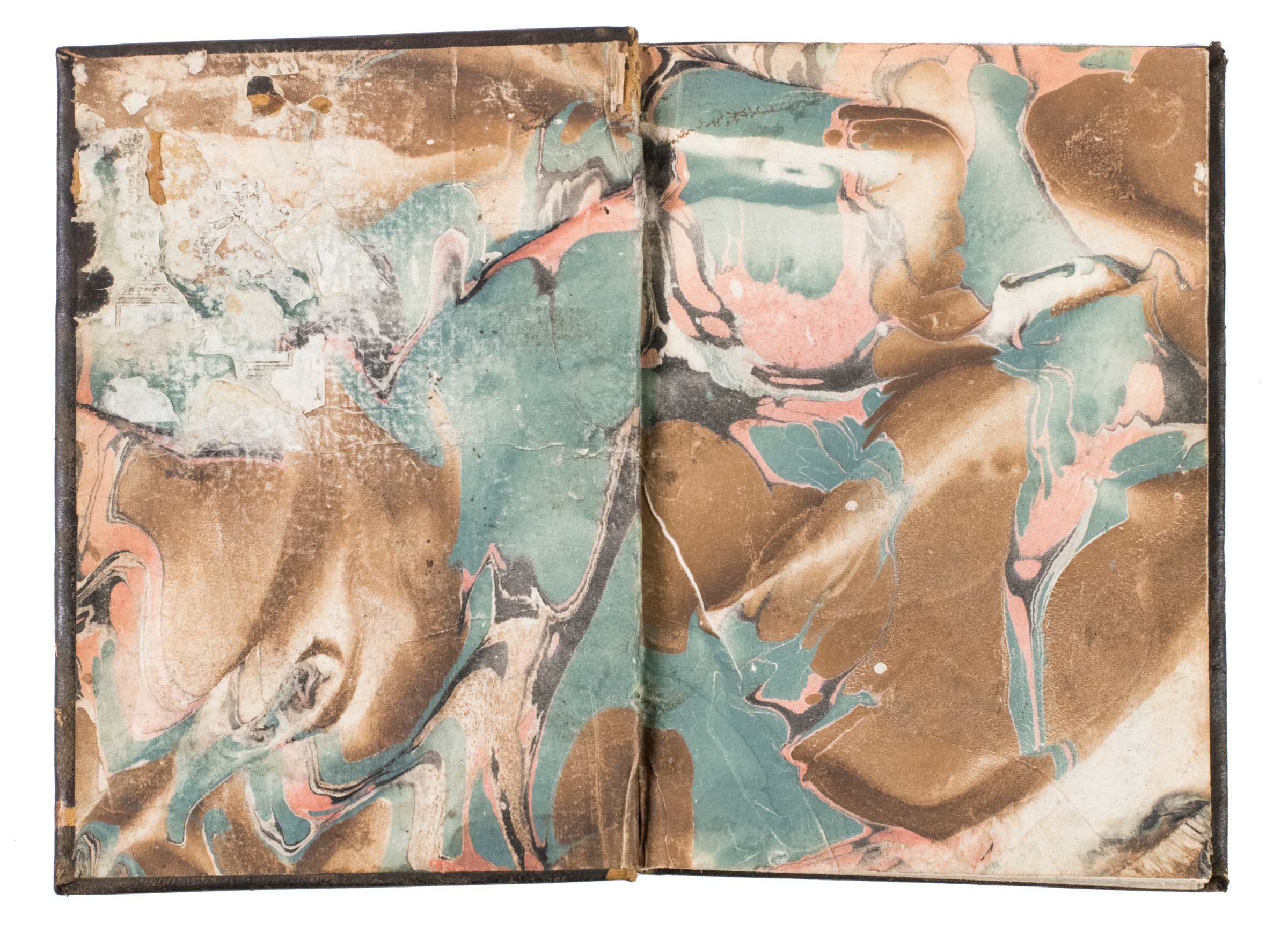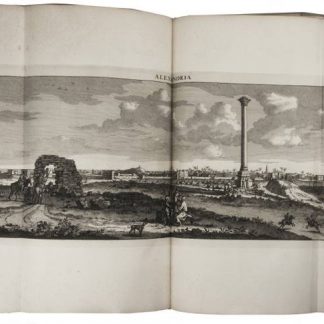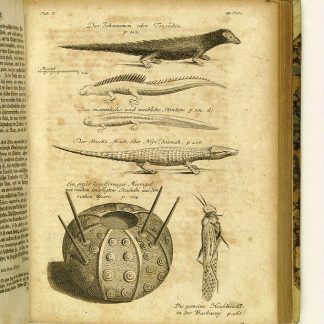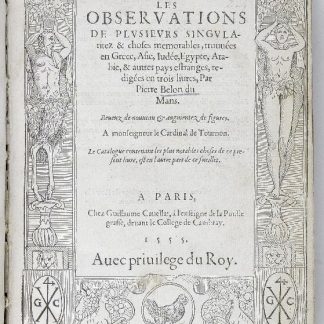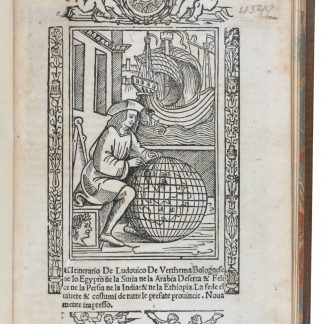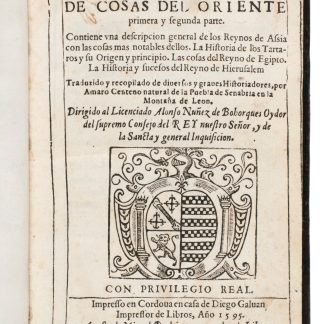First edition of a rare work about the Orient and the crusades
Historia de cosas del oriente primera y segunda parte. Contiene una description general de los reynos de Assia con las cosas mas notables dellos. La historia de los Tartaros y su origen y principio. Las cosas del reyno de Egipto. La historia y sucesos del reyno de Hierusalem.
4to. 2 parts in 1 volume. (8), 138, (4) ff. With a woodcut coat-of-arms on the title-page and the divisional title-page for part 2, an elaborate Jesuit woodcut IHS vignette on the verso of the last leaf above the colophon and woodcut initials throughout, with a few typographical or woodcut tail-pieces, all text is set within a simple woodcut frame. Later tree marbled sheepskin, with a gold-tooled green morocco title label on the gold-tooled spine, blue sprinkled edges, marbled endpapers.
€ 28,000.00
A rare and detailed 16th century overview of the history of the Orient and the crusades. It consists of two parts: the first contains a geographical description of the Far East, a short account of Muslim military history, and a history of the Mongols. As Centeno mentions in the introduction, this part is a translation of "La flor des estoires de la terre d'Orient" by Hayton of Corycus from 1307, which had never been printed in Spanish before. The second part details the history of the crusades and was written by Centeno himself.
Hayton or Het'um, born in the 1240s, was the nephew of the king of Cilician Armenia. Little is known about his early life, except that he was a general and fought extensively in the East. His work, commissioned by Pope Clement V, became popular all over Europe. It was translated into multiple languages and copied and printed until the 17th century. It was one of the first works to describe the Mongols and therefore shaped the way the West viewed them.
Cilician Armenia was regularly raided by the Mamluks and in favour of the crusades. Hayton, too, clearly disliked Muslims, which shines through in his work. According to Bedrosian, the aim of his work was to start a war. This is most apparent in chapter 49, in which Hayton writes that before anyone can go to war, the enemy's condition and strength must be understood. He describes those aspects of the enemy in detail in the preceding chapters.
"La flor des estoires de la terre d'Orient" ends with a letter to Pope Clement V with suggestions for a crusade to retake Jerusalem and parts of Cicilian Armenia. However, Centeno did not include this in his translation. Instead, he writes that it is important to know the history of the Holy Land before trying to recover it. The second part of the book, therefore, is a short but complete account of the crusades, from the death of Godfrey of Bouillon until the deafeat of the crusaders in Egypt, including the reign of Baldwin, the fights against the Turks, Emperor Frederick's death, the battle of Arsuf, and the Baron's crusade from 1239 to 1241. Together with the first part, Centeno's work offers a fascinating and detailed history of the East, especially of the Holy Land, written from multiple perspectives.
With handwritten ownership of "D. Pedro Romer Conde" and a round stamp on the verso of the title-page.
Binding shows slight signs of wear. Front pastedown has damage from a previous owner's removal of a formerly mounted bookplate. A few pages have manuscript annotations. Some pages are slightly stained, not affecting the text, with a small tear in the margin of leaf 104. Slightly browned throughout. The page numbers are not always in the right order, as usual. As with all copies of the work, the paper is sometimes so thin that the ink on the other side of the page shows through. Otherwise in very good condition.
Adams I, 261. R. Bedrosian, Histories of the Tartars (2004), preface. Palau III, 376. Cf. Histories of the Tartars, Hayton of Corycus (2004), transl. by Robert Bedrosian.


